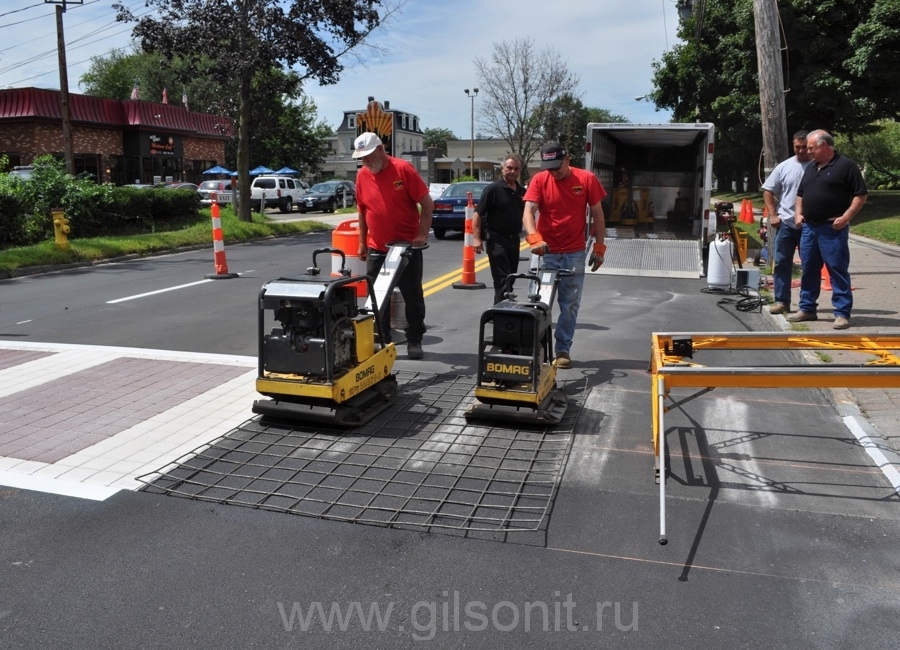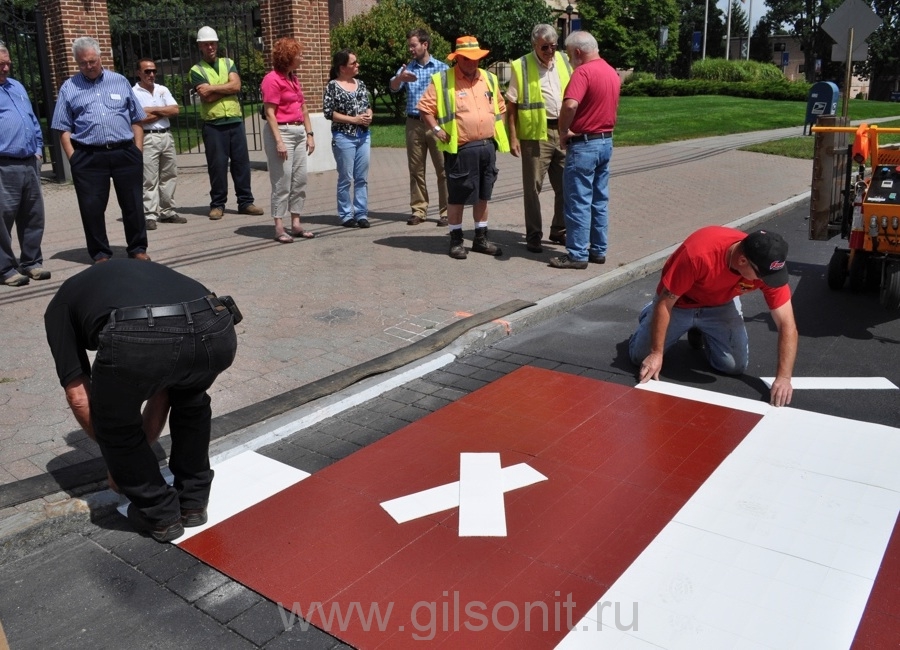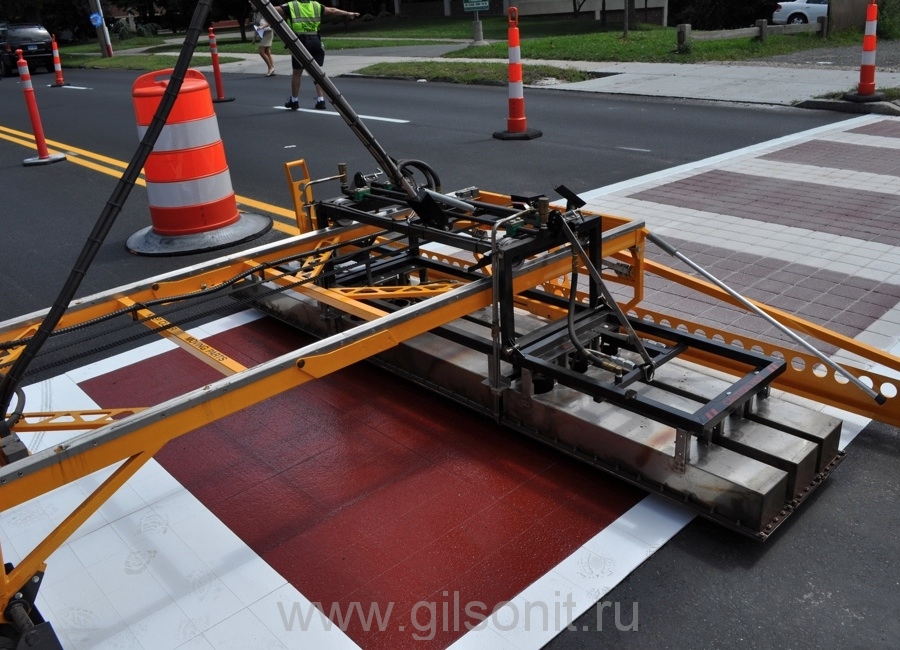
In this post we will focus on StreetPrintXD, a durable faux brick crosswalk for streetscape projects provided by Ennis-Flint (ennisflintamericas.com). The process is simple; melting and pressing a plastic sheet into an asphalt concrete surface. A cross section of an installed pavement is shown below.

The installation process begins by grinding off existing pavement markings. A proprietary infrared heating unit is used to soften the existing asphalt pavement surface. Once “soft,” a wire pattern is positioned over the heated area. There are several wire patterns but we have found that running course and herringbone are the most popular. The wire pattern is then pressed into the hot asphalt concrete with either roller or plate compactors.
This leaves grooves in the asphalt concrete. Afterwards, 2×2 foot plastic sheets are placed on the pavement and aligning with the pressed grid pattern. The infrared heat is reapplied to soften the plastic sheets. After heating, the wire grid is placed to match up with the earlier impression. The wire grid is pressed into the grooves with the same rollers or plate compactors. The plastic sheets are melted into the pavement surface.

We have found the imprints work better on newer asphalt concrete pavements; the heating will soften the pavement surface and there is better porosity for the plastic sheets to melt and be compacted into.
PRO TIP: There is a direction or grain to the plastic sheets. The contractor should place all the sheets with the “grain” in the same direction. Not doing so will result in an appearance of discoloration and individual plastic sheets will become noticeable.
This series of StreetPrint installation photographs are provided by Ennis-Flint.

